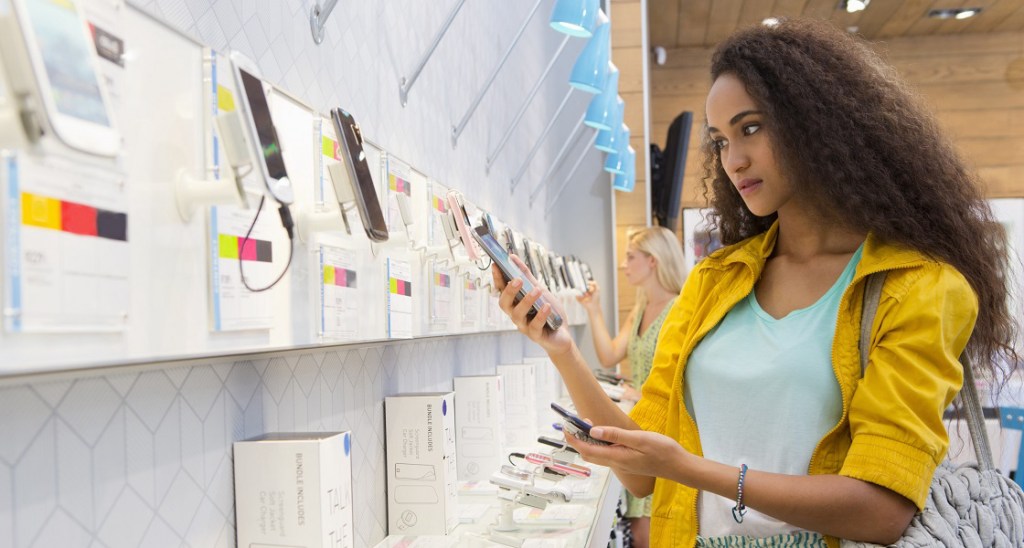1. People First
Winning brands are going beyond transactions to build deeper relationships with consumers. Personalization, trust, and wellness are reshaping how retailers curate their assortments and design their experiences.
- Ulta Beauty highlighted wellness as a strategic focus and previewed an invitation-only marketplace aimed at expanding product assortment in a curated manner.
- Thrive Market shared how restricting over 1,000 ingredients has helped them create a tightly curated, wellness-forward grocery experience.
- Wayfair emphasized the power of its five-step “Wayfair Verified” product process—originally developed for digital—as the foundation for building trust in physical retail.
- CVS Health underscored the importance of relevance and convenience, with strategies tailored to meet local community needs across its 9,000+ store footprint.
- Gap Inc. spoke about returning to its core brand identity, positioning itself once again as a cultural touchstone and quintessential American brand.
To be shopper centric, brands and retailers must be highly adaptive to shopper preferences. Wellness and ingredient focused trends saw products containing Red Dye #3, which will be fully banned in the next two years, have a 5% decline in sales in 2024, ahead of the ban (source: NIQ Retail Measurement Services). Shoppers are ready for retailers to personalize and curate their offer to preferences like this and 68% percent of shoppers agree that tech-enabled personalization is a good thing (source: FMI US Grocery Midwinter Trends Report). Brands and retailers must consider how to integrate technology to make their brand resonate better with consumers and feel more people centric.
68%
Shoppers agree that tech-enabled personalization is a good thing.
2. AI to Consumer (A2C): The New Discovery Engine
Consumers are increasingly using AI tools in daily life—to plan, shop, and navigate the world. While much of this behavior is still organic, marketers are beginning to rethink SEO/SEM strategies and shift budgets toward visibility in AI-powered experiences. Commerce companies are also working on how to best integrate AI into their internal systems and workflows.
- Reddit unveiled AI tools that help advertisers create content tailored to specific subreddit communities—matching tone, language, and style for maximum impact.
- ALDO Group shared best practices for internal AI adoption, including fostering a culture of experimentation, aligning business and engineering teams, and investing in scalable infrastructure.
47% of Gen Z and 48% of Millennial consumers indicate they would accept a product recommendation from their AI assistant (source: NIQ Mid-Year Consumer Outlook: Guide to 2025). As AI consumer adoption grows and AI becomes more effective, brands and retailers will integrate AI technology more deeply into both shopper facing and internal systems.
3. Search Moves Beyond Just Functional
Search is no longer just about finding a product—it’s about discovering a feeling. As shopping journeys become increasingly immersive, leading retailers are reframing search as a form of entertainment and storytelling.
- Pandora shared that 90% of jewelry shoppers begin their journey online, prompting a push toward more emotionally engaging digital search experiences.
- Lulus described the need to trigger emotion and embrace the role of an entertainment channel in fostering product discovery.
- eBay showcased how its eBay Live platform is turning search into community-led storytelling, enabling sellers to connect with like-minded buyers in real time.
90% of CPG searches on Amazon are unbranded (source: NIQ study). In an unbranded environment, brands must optimize for attributes to be found and then convert shoppers with compelling content. Retailers should also focus at advancing the search experience. They must evolve beyond utilitarian search functionality and foster discovery and excitement in online shopping to win with tomorrow’s consumer.
90%
of CPG searches on Amazon are unbranded.
4. Social Media as a Strategic Trendspotter
Social platforms are evolving into strategic tools—used not just for promotion, but to inform innovation, validate demand, and react in real time to cultural moments.
- GE Appliances, a Haier company, used social media measurement to assess interest in a sourdough starter-feeding appliance—before it was even built—proving the power of social insights in product development.
- American Eagle Outfitters responded swiftly to a post-Super Bowl spike in searches for “flare jeans,” capitalizing on virality across marketing, supply chain, and store operations to meet unexpected demand.
- Staples highlighted how its TSA PreCheck service offering organically expanded into adjacent categories like passport photos and luggage—showcasing a natural narrative evolution it was able to promote across social.
- Galderma demonstrated how social listening and search data guided the successful 2024 rebrand of Cetaphil, repositioning the legacy skincare brand to resonate with younger consumers.
77% of Millennials and Gen Z shop on social media platforms (Source: NIQ Global Gen Z Spending Report). Consumers spend tremendous amounts of time-consuming content and interacting in these spaces. Social platforms foster product discovery, influence purchase behavior, and are pushing more into commerce on the platforms themselves. Brands and retailers are well served monitoring and optimizing for the top social media players today.
5. Retail Media & Alt Revenue: Be Strategic, Not Distracted
With pressure to unlock new revenue streams, many retailers are exploring retail media, data monetization, and in-store partnerships. But success in this space demands focus and strategic fit—not just opportunism.
- Shoptalk presented five value creation pillars for industry practitioners to evaluate the likelihood of alternative revenue success: Capability, Scale, Unique Audience Reach, In-Store Integration, and Shopper Wins. Retailers that meet these criteria are best positioned to attract brand investment while staying true to their core business.
US CPG retail media spend is projected to reach $27 billion by the end of 2026, growing at a 17.9% 2-Year CAGR (source: The Evolution of Retail Media: Decoding What Works – And What Doesn’t | FMI | NielsenIQ | Think Blue). Brands and retailers don’t want to be left behind adapting to this capability area but should think pragmatically about how retail media or other alternative revenue streams fit into their legacy business.

Embracing Innovation for the Future of Retail
Shoptalk Spring 2025 showcased the dynamic evolution of retail, emphasizing the importance of personalization, AI integration, emotional engagement in search, strategic use of social media, and innovative revenue streams. As brands and retailers continue to adapt to these trends, they are not only enhancing consumer experiences but also positioning themselves for sustainable growth in an increasingly competitive market.
Winning Consumers in 2025
The insights and strategies shared at this event underscore the critical role of technology and human connection in shaping the future of retail. By embracing these innovations, the industry is poised to meet the ever-changing demands of consumers and unlock new opportunities for value creation.





